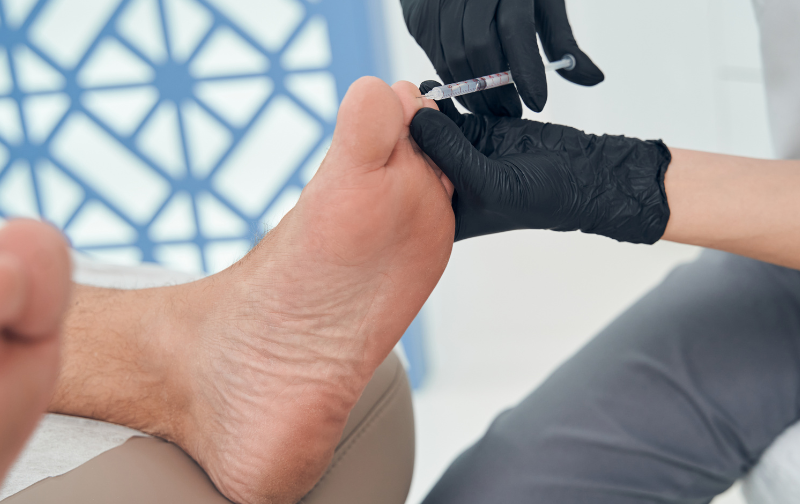Podiatric medicine focuses on diagnosing, treating, and preventing conditions that affect the foot, ankle, and related structures in the lower extremities. This specialized field of healthcare addresses a wide range of conditions that impact mobility and quality of life. Podiatrists are trained to provide both conservative care and surgical interventions, depending on the severity of the condition.
Managing Bunions
Bunions are a common foot condition often treated in podiatric medicine. They form as a bony bump at the base of the big toe caused by structural foot issues, biomechanical imbalances, or prolonged pressure from tight or ill-fitting shoes. Over time, the big toe angles inward, leading to discomfort, redness, swelling, and difficulty walking or wearing specific shoes.
Treatment depends on the severity of the condition. Early options include wearing wider, well-fitting shoes, using orthotics for alignment, or applying padding to reduce irritation. Anti-inflammatory medications and ice can help manage pain and swelling. For severe cases, surgery may be needed to realign the joint, remove the bump, and restore foot function, improving comfort and quality of life.
Addressing Plantar Fasciitis
Plantar fasciitis frequently affects podiatry patients and occurs when the plantar fascia, the thick tissue connecting the heel to the toes, becomes inflamed. This condition often causes heel pain, particularly during the first steps in the morning or after long periods of inactivity. People with high arches, flat feet, or poor arch support are more likely to develop it. Treatments typically include stretching exercises, physical therapy, and wearing supportive footwear or orthotics. In severe cases, additional medical interventions may provide relief.
Relieving Ingrown Toenails
Ingrown toenails happen when the edges of a toenail grow into the surrounding skin, causing pain, redness, and swelling. Without treatment, the condition can cause infection. Improper nail trimming, tight shoes, or toe injuries often trigger ingrown toenails. Podiatrists treat this condition by removing the ingrown part of the nail, relieving pain, and guiding proper nail care to prevent it from reoccurring. For persistent cases, they may recommend permanent solutions to fix the problem.
Treating Sports Injuries
Sports medicine is another area in which podiatrists play a significant role, contributing to the health and performance of athletes at all levels. Athletes are often vulnerable to foot and ankle injuries due to repetitive motion, high-impact activities, overuse, and the unique demands of specific sports. These injuries can range from minor discomfort to serious conditions that affect an athlete’s ability to perform.
Podiatric treatment for athletes combines rehabilitation strategies to promote healing and injury prevention techniques like strengthening exercises and proper warm-ups. Advanced technology is often used to create customized footwear or orthotics tailored to the athlete’s specific needs. These devices enhance performance, provide better support, and reduce re-injury risk. Podiatrists collaborate with healthcare professionals like physical therapists and sports trainers to develop comprehensive care plans that keep athletes active and mitigate future risks.
Enhancing Foot Health Through Podiatric Medicine
Podiatric medicine provides comprehensive care for various conditions affecting the foot and ankle, improving mobility and comfort for many individuals. Whether someone is dealing with bunions, plantar fasciitis, ingrown toenails, or sports-related injuries, podiatrists offer treatment plans that align with individual needs and lifestyle considerations. Consulting with a podiatrist can help address concerns related to foot health while promoting long-term well-being.
- FREHF – The Revolutionary Future Of Human-Centered Technology!
- Adsy.Pw/Hb3 – Boost Your SEO And Drive More Traffic!
- Fitness Based Vacations By Timeshealthmage.com!
- TimesHealthMag Tips For Improving Sleep Quality – Expert Advice For Better Rest!
- How TimesHealthMage Helps Improve Your Lifestyle Habits!


Leave a Reply